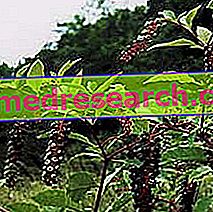Charcot-Marie Tooth Ataxia: definition
Charcot-Marie Tooth's ataxia is one of the family neurological hereditary diseases: first the syndrome affects the nerves, then, by induction, it also damages the muscles and the other sites of the body. The above ataxic syndrome owes its name to Jean-Martin Charcot, Pierre Marie and Howard Henry Tooth, the three neurologists who first described this ataxia in detail - although they were not the first researchers to have discovered it - around the end of the nineteenth century.
Currently, unfortunately, in spite of scientific progress, there is not yet a completely resolutive therapy; however, the medical profession seems to be increasingly sensitive to this problem and many possibilities for treatment have been hypothesized, which is still being tested.
Incidence
In the Italian state, Charcot-Marie-Tooth ataxia is considered a rare disease, but it is the most common inherited neurological ataxia, affecting 36 subjects per 100, 000 healthy. Until a few years ago, it was thought that the disease affected 1 subject every 2, 500: currently, this relationship seems to have been refuted.
However, there are no established and proven epidemiological data, given the symptomatic heterogeneity of ataxia: in fact, even within the same family nucleus, Charcot-Marie-Tooth ataxia can manifest itself with different symptoms.
Synonyms
Charcot-Marie-Tooth ataxia (CMT) is also known by other acronyms: CM (Charcot-Marie), HMSN (Hereditary Motor and Sensory Neuropathie), PMA (Peroneal or Progressive Muscolar Atrophy) or, more simply, as neuropathy motor-sensory hereditary.
We often speak of "disease" or "pathology of" Charcot-Marie-Tooth; in reality it would not be entirely correct, since this ataxia includes a heterogeneous group of disorders and diseases, sometimes extremely different from each other, therefore difficult to find.
Symptoms
From various scientific studies, it appears that the most known form of Charcot-Marie-Tooth ataxia is the 1A, distinguished by tactile hypersensitivity and loss of muscle tone in the legs. More specifically, the 1A form of Charcot-Marie-Tooth ataxia affects the leg segment below the knee and, only rarely, also affects the thigh and the thigh root. Sometimes, the CMT also affects the arms especially the forearm.
What unites all the different forms of Charcot-Marie-Tooth ataxia is the slow, but progressive and unstoppable, degeneration of the disease, so debilitating as to require continuous assistance for the patient. When ataxia degenerates faster than expected, ie when the patient's symptoms deteriorate more rapidly, it is probably an inflammatory ataxia of a neuropathic nature : only diagnostic tests can confirm the hypothesis.
Charcot-Marie-Tooth's ataxia does not affect the articulation of the word, nor hearing or sight; only rarely is the respiratory and urinary system compromised [taken from www.atassia.it]
Among the most common symptoms (but not always present), we mention: claw-like hands and deformities of the hand in general, tendon shortening, loss of balance, motor uncoordination, areflexia (lack of reflexes), osteo-muscular pains, nerve impairment and muscle atrophy.
Classification
Given the heterogeneity of disorders derived from the disease, the ataxic forms of Charcot-Marie-Tooth have been classified into five large groups, marked with numbers from 1 to 4 for the first four types, while the last, distinct for its transmission autosomal dominant linked to the X chromosome, is known as CMTX and afflicts 10-20% of patients with Charcot-Marie-Tooth ataxia.
The classification of Charcot-Marie-Tooth ataxias is quite complex, given that each of these 5 large groups is divided into further sub-categories, depending on the triggering cause, the mutated gene and the disturbance it generates. To give an example, the CMT1 form is the most frequent Charcot-Marie-Tooth ataxia, which affects 80% of patients with CMT: type 1 is classified into a good five other syndromes, differentiated precisely by symptomatology and triggering cause .
Diagnosis and treatment
The Italian Society of Neurology provides the guidelines to draw up a correct diagnosis, although it is not possible to treat the patient definitively, while identifying with certainty the changed gene or the triggering cause. The diagnosis is useful to help the patient to deal with the disorders generated by the Charcot-Marie-Tooth ataxia and to improve the quality of life of the same, when possible. There is also a pre-conception genetic diagnosis, for people who want children.
From the macroscopic point of view, an evident symmetrical muscular atrophy is observed which affects the muscles of the foot, the fibula and the common extensor of the fingers: muscular atrophy is responsible for a progressive paralysis that first affects the feet (generally, also vascular lesions and perforating ulcers are observed), then the hands.
From the histological point of view, instead, we notice a hyperplasia of Schwann cells, followed by a progressive alteration of the myelin sheaths; the connective tissue thickens and tends to settle at the level of the nerves. The inevitable consequence is the degeneration at first of the posterior cords and then of the pyramidal bundles. [taken from Lessons of pathological anatomy, by M. Stefani]
In conclusion, the Charcot-Marie-Tooth ataxia is a debilitating syndrome in all respects, which only rarely compromises the self-sufficiency of the affected subject, although continuous assistance is recommended.



